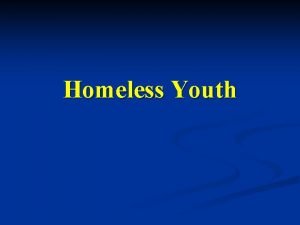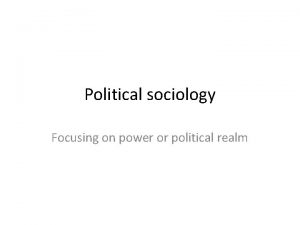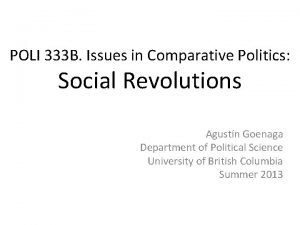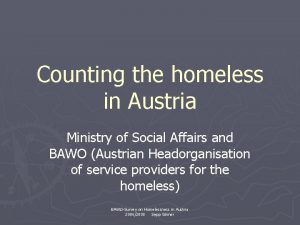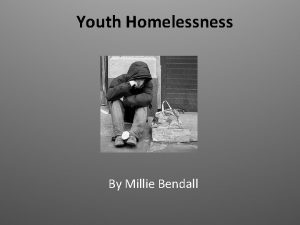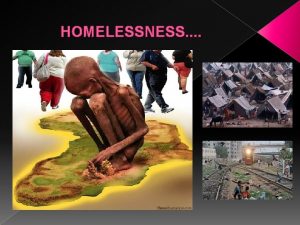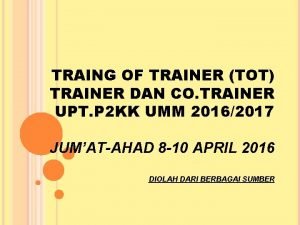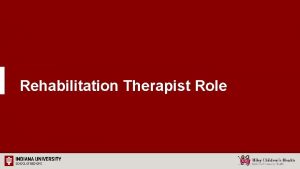Welcome Trauma Youth homelessness Sharon Gurr Trainer Therapist










- Slides: 10

Welcome Trauma & Youth homelessness Sharon Gurr Trainer / Therapist

Why behind the What Complex needs are the issues that young people present, for which they are seeking support, however, every presenting issue has a context, the context can be situated in their past, so in order to fully understand the presenting issue, we must understand its context in their past

Aims: Increase knowledge & understanding in • underlying factors contributing to presenting complex needs

Indicators Anti-social behaviour Substance Misuse Criminal behaviour Depression/anxiety Anger & aggression Self harm / attempted suicide Rent arrears Non-engagement

Fruit (presenting issues) • • Addictions Risk taking behaviour Debt / rent arrears Anti-social behaviour

Risk Factors Anti-Social Behaviour Anger & aggression Substance misuse Criminal involvement Non-engagement Risky behaviour Selfharm Depression / anxiety ACES Breakdown in relationships Bereavement & loss Domestic abuse Taken into care Childhood abuse Poor mental health Childhood neglect

Roots (traumatic events) • Trauma 1 – current / present: car crash, war, sudden death of a loved one, natural disaster (flood, earthquake) • Trauma 2 – life long / on going: Adverse childhood experiences (physical, sexual, emotional abuse; physical & emotional neglect); domestic abuse, torture, war, carer with mental health, carer being incarcerated, bullying,

Feelings • • • Depression & anxiety Guilt & Shame Abandonment & rejection Sadness & loss Worthless Helpless & hopeless

Core beliefs • • “I am stupid/ useless / dirty” “No body likes me” “Adults cannot be trusted” “The world is an unsafe place” (how we see ourselves, adults & the world around us)

Conclusion As workers it can be quite easy to focus on the behaviour, however this can often lead us to becoming burnt out and frustrated and has also damaging effects on our relationships with the very clients we want to establish trusting and safe relationships with, If we can recognise what lies beneath the decisions & choices our clients make this can be far more effective for the worker to become more empathic and understanding towards our clients establishing a trusting and safe relationship to enable both the client & worker to work towards a shared goal.


